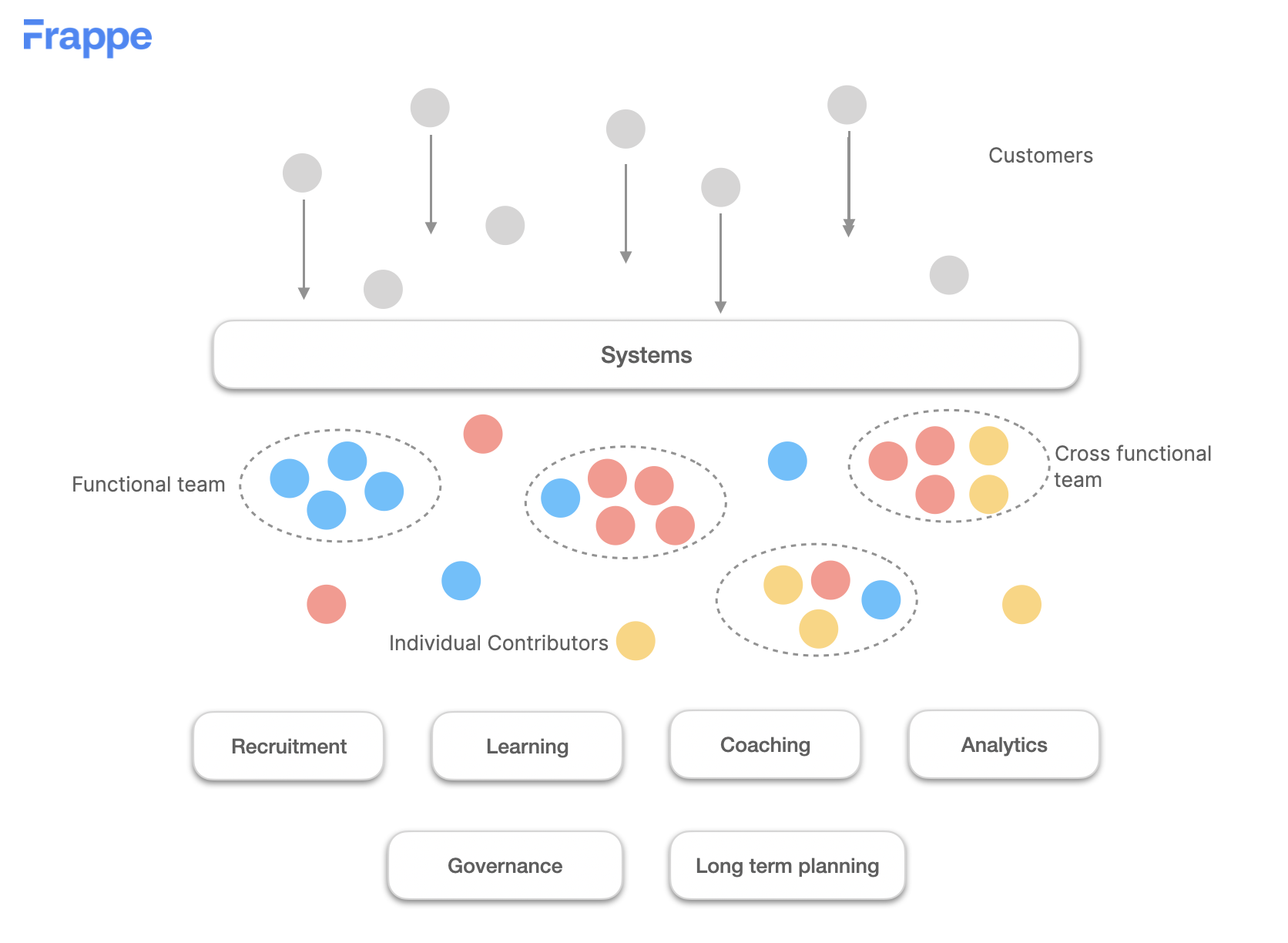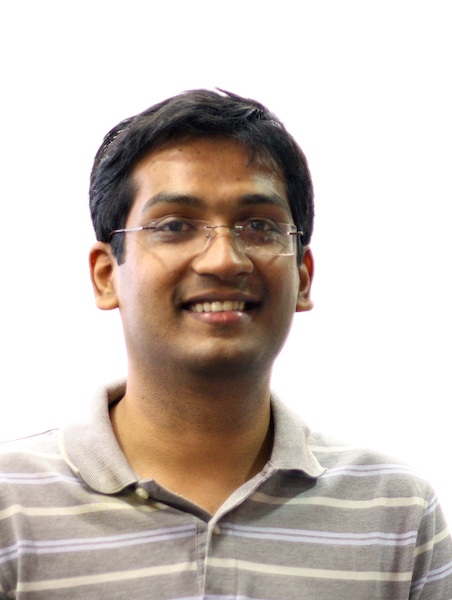Flat organizations are amazing. Everyone feels motivated and inspired to work, and are only limited by their imagination. But as we have grown, we have come to accept that flat organizations have their limitations. As the number of members increase, the communication overhead grows exponentially and beyond a point it is hard to keep track of who is doing what. This makes people feel confused and unhappy. The question we have been mulling about is, if not flat then what?
Hierarchy is not the answer
At Frappe we have committed ourselves to a human first, democratic organization, so going back to the traditional hierarchy makes no sense. Hierarchical organizations dehumanize those working for them. Each person is given a very specific task and has to do that task in a committed manner to ensure the organization works. If you are thinking of an orchestra - it is like working in an orchestra which plays only once piece, day-in and day-out. Tasks soon become routine and mundane and this drives people crazy.
Everyone is kept in a tight leash by external motivators which are a mix of reward and punishment. This is the perfect recipe for making a political organization where people seek to stay close to their power centers so that they get rewarded and promoted. The success of such organizations depends disproportionately on the leadership and their quality and ethics.
Introducing the Sandwich
So we accept that flat organizations do not work because it is too chaotic and hierarchy does not work because it is inhuman, so we need to work out some other model. Let us list down our main goals that appear conflicting:
- The organization should meet its commitments (to customers, shareholders etc)
- Decision making should be as local as possible. People should truly feel that have autonomy and freedom to work and experiment
Here is a proposal of how this can be achieved

In the sandwich organization, we replace the commitment driven, top-down approach by systems. In our case we have ERPNext. All the “work” is captured in the system and the people can semi-autonomously pick tasks. They can work as individual contributors or in functional or cross functional teams.
The organization carefully measures its outcomes and presents detailed analytics to each member and team. To cover for gaps, it tries to recruit new people in specific roles to fill those gaps. It provides continuous learning and coaching to members who want to learn new skills or need feedback on their performance and growth. Underlying this system is a long term planning team which does financial planning and allocates resources to each part of the organization.
The elements
Here is how each supporting element of the organization would work:
- Systems Group: The job of this group is to ensure all of the work happens on a common platform and is captured. Even internal workflows should be captured so that we people are aware of the amount of activites that need to be completed at any stage of the value chain. Thankfully we have ERPNext for this.
- Analytics Group: The analytics group must analyze the quality and quantity of work in the system and identify bottlenecks. They must come out with recommendations on work design and resource allocations to smoothen out the bottlenecks. They must work with learning group and coaches to redesign and improve job descriptions or reskill people as required.
- Recruitment Group: This group must take in formation from the analytics group and plan for resources specific to the roles in need.
- Learning Group: This group must help people map and improve their skills. They must work closely with each team member and identify skill gaps based on the roles they would like to play.
- Coaching Group: Coaches must work with people and help them solve specific problems. Coaches also design the roles and processes that specialists can follow. They also help teams or individuals identify problems and think through different solutions. They must also work on the psychology of each team and individual and help them where needed.
- Long Term Planning: This group must own the planning piece and think of long term cross-team investments into different products and markets and what actions must be taken in this matter. Decisions about products and markets can also be done by individual groups within their own sphere of influence.
- Governance: The governance group must be an elected body responsible for the overall maintenance of the the organization structure and its implemenation. The group must work with the planning and analytics group and allocate resources as required to maintain and adapt to changing needs.
Will this work?
The natural question is why? This is a generic question we get asked all the time. Why open source? Why build your own framework? Why build your own cloud platform? The answer to these is usually best answered by why not?
Societies and cultures are in constant flux. After the COVID break, people seek self actualization more than mere work satisfaction. People want their lives to mean something, and a traditional model has proven to kill any such needs. There are millions of jobs that remain vacant today because no one wants to do soul crushing jobs anymore.
We believe this is a great time to experiment with organization structures, and this is our attempt. We will keep you updated on how it's coming.
Edit: There was a missing element of governance, so added the Governance Group




·
Great initiative...!! but hierarchy with human touch can give better results
·
One question- since the model is to move away from "specific tasks" to more flexible and freedom to experiment, will this also mean a change in salary structure with higher variable components?
·
Rushabh, all the best with your recommended structure. I will wait for your next update about how it is going. I would really be considering this approach while building the team. However, I would need more information about this model. For example, I understand from the article that in the Sandwich model, a member of a team A would intentially work on tasks that belongs to a team B. If that's the case, I am wondering what motivates him to do so? Is it the Energy Points?
Anyway, waiting for more from you!
·
Interesting! Wish you success with your sandwich model. I read basecamp methodology of their style of working and it sounds similar. Maybe you could spare few hours on their ebook to gain some ideas. It would be an interesting insights to see what's different between your sandwich & basecamp style
·
Nice experiment!